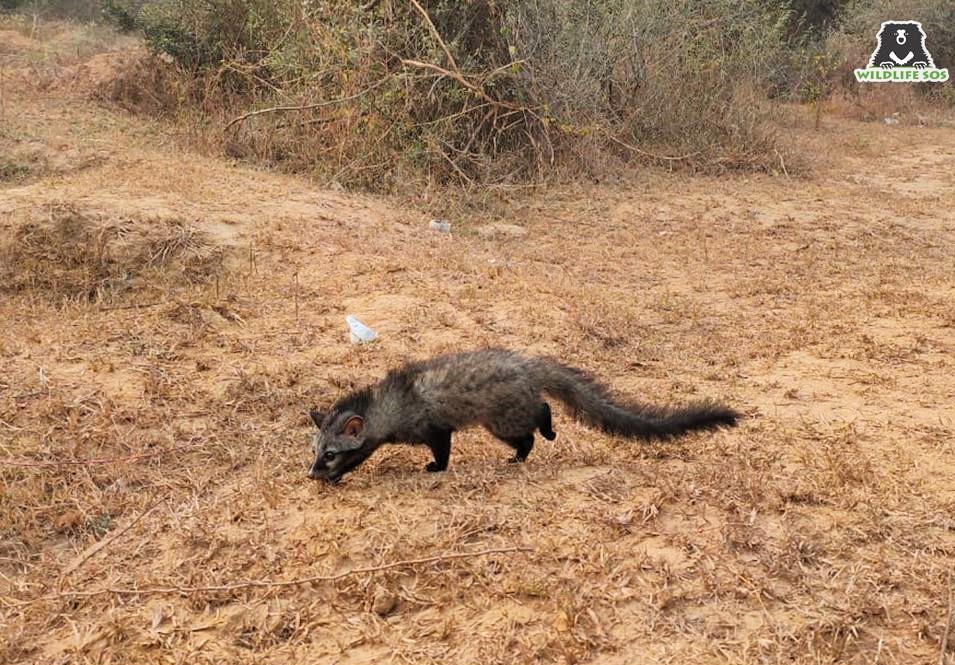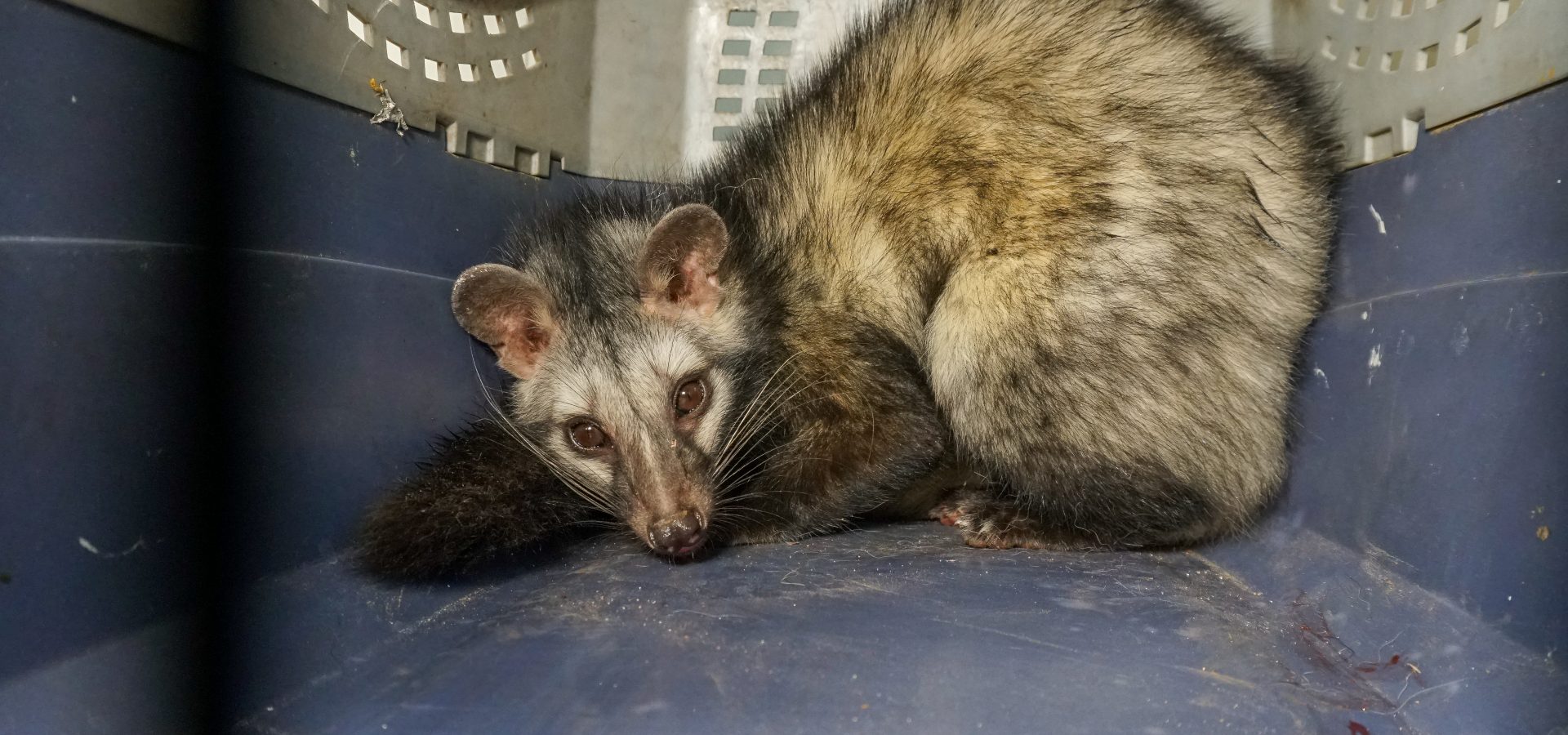Mammalian carnivores can be broadly divided into Feliforms and Caniforms. Both evolved from a single line of tiny, tree-dwelling animals that lived on trees and on the ground. Being more of a prey than predator, these animals led nocturnal lives in fear of stronger carnivores in their habitat.
However, evolution slowly separated feliformia and caniformia. Derived from the Latin term felis, the term ‘feliforms’ encompasses various cat-like carnivores including hyenas, mongooses and civets along with both big and small cats.
While having the ability to adapt, all feliforms ranging from the largest tiger to the smallest mongoose are currently being threatened by rising human-animal conflict. In India, the problem arises from human settlements encroaching on wildlife habitats, open wells in forest areas, illegal trade of body parts, and more. Many feliforms caught in distress have been rescued by Wildlife SOS’s Rapid Response Unit over the years.
1. Striped hyena
(Family: Hyaenidae)
The dog-like appearance of the hyena raises several eyebrows after people get to know that it is more closely related to cats. Protected under the Wildlife (Protection) Act 1972, the striped hyena is the only species of hyena found in the Indian subcontinent and is recognised by its thick mane of hair and long stripes.
These feliforms suffer from a bad reputation due to their unusual appearance and unfounded myths, but that’s not all. Striped hyenas face the threat of open wells that have come to exist in their habitat. These uncovered wells have proved to be extremely dangerous for nocturnal animals like hyenas that have either drowned in them or have starved to death.
Road accidents prove to be a second major deterrent in the survival of hyenas. Wildlife SOS has rescued several hyenas from sites of human-animal conflict, including an instance in 2022, when the team in Maharashtra rushed to the aid of a hyena that was found gravely injured on a national highway.

In two more incidents that occurred in the state of Uttar Pradesh, the rescue unit saved a hyena from the fields and one that was stuck inside a culvert in the Azizpur village of the Mathura district. The hyena’s negative reputation often impedes rescue attempts, as in the latter incident, locals had intervened to chase the animal away.
2. Civet
Family: Viverridae
Civets are often referred to as civet cats, but the name is a misnomer because civets share closer relations with mongooses than cats. India is home to eight different species of civets, most of which are protected under Schedule II of the Wildlife (Protection) Act,1972. Similar to the hyena, this feliform is caught in a network of myths.
Several local cultures regard them as “baby stealers”, “onion thieves”, “gravediggers” and as bad omens. Over the years, Wildlife SOS has been beckoned to rescue many civets, including one in May 2022, where a dehydrated Asian palm civet had wandered into a shoe factory.
In another incident, a rare small Indian civet was recovered from the campus of Jamia Milia University in New Delhi. Civets are increasingly common in urban areas, leading to encounters such as this. Civets also find themselves in unanticipated circumstances that often lead to young civets being separated from their mothers.

One such situation is accidentally falling into open wells. Several civets have been saved from open, uncovered wells, with the most recent rescue made in May 2023.
3. Mongoose
Family: Herpestidae
Remember Rikki Tikki Tavi, the brave mongoose who had fought two cobras in Rudyard Kipling’s story? Stories of rivalry between snakes and mongooses have been passed down through generations, but a far greater threat to mongooses comes from the very entities that Rikki Tikki Tavi served to save – human beings.

There are six species of mongoose in India, and while they were once grouped with civets as part of the same family (Viverrids), they now have their own separate category. These feliforms are protected by Schedule II of the Wildlife (Protection) Act, 1972 as well, but that often fails to save them from the greed of illegal trafficking rings. Mongoose hair is a coveted item by many and finds its use in paintbrushes.With strategic planning and effort, Wildlife SOS has busted many operations dealing with wildlife contraband.
4. Rusty-spotted cat
Family: Felidae, Genus: Felis

The rusty-spotted cat is one of the smallest felines in the world, and our team has rushed to the rescue of many of them. Among them was the rescue of an infant rusty-spotted cat, which was found in a sugarcane field in Maharashtra.
The rescue operation was a success as the team managed to reunite the baby with its mother. In another similar incident from 2021, two more cubs were brought back to their mother.
5. The Big Cats
Family: Felidae, Genus: Panthera

Separation of mother and cub has become an increasingly common problem for another species of cat, the Indian leopard. While she ventures out to seek food for her young, mother leopards often leave their cubs in the shelter of tall stalks of sugarcane. Local farmers of the fields encounter these cubs and this necessitates external help so as to reunite them with their mothers.

Often, many of these leopards often fall into the open wells situated around farm fields and are unable to clamber out of them. Apart from poaching and trafficking, the presence of open wells has become hazardous for these felines. To address this, Wildlife SOS has launched a petition to safeguard leopards and other wildlife and prevent them from accidentally falling into wells.
We have rescued hyenas, civets, leopards and even a tiger from many of these open wells which become death traps for animals. As it became increasingly clear that a long lasting solution was required beyond rescue and release, we initiated the Maharashtra Open Wells Conservation Project.

Phase-I of this massive undertaking aims to cover 40 uncovered wells, and have successfully covered 10 wells so far. Help us save the feliforms and other voiceless animals of India by coming forward to donate towards the open wells project.





